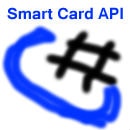Smart Card Issuance and Personalization using Card Printers with Integrated Chip Encoders
Introduction
Plastic cards have become part of everyone’s life, as credit cards to driver’s licenses, membership cards, “green cards”, and employee identification badges. Their standard size, portability and durability have made them the vehicle of choice for many applications.
Digital plastic card printers offer the ability to create smart cards tailored to the application or to customize and personalize cards on demand, right at the point of issuance. Closely integrated with image capture systems (digital cameras, etc.) and computer database systems, the printer provides the delivery point of a highly integrated system. The printing process is fast (just a few seconds per card) so that cards are generated and personalized while the customer cardholder waits, quickly connecting the customer or cardholder to the issuing organization or program.
Digitally printed plastic cards provide numerous technological features, but start with a blank plastic card that can be printed with any combination of artwork, graphics, text, digital photograph, bar codes, logos, etc., limited only by the issuer’s imagination. Additional machine readable information can be encoded such as magnetic stripes and smart card chips.
Digital plastic card printing has replaced previous card generation methods and integrated the card delivery process into the electronic environment that runs and tracks the rest of your business or agency.
Smart Cards
There are a wide variety of contact and contactless smart cards currently in use. The Terms “Smart Chip Card”, “IC Card”, and “Smart Card” all refer to the same type of card. Smart cards have a chip embedded in them which can be programmed. Smart cards can store over 100 times more information than a magnetic stripe and they can be reprogrammed to add, delete, or rearrange data.
Smart Cards in Europe. Smart cards were invented in Europe in the 1970s and were in wide use in Western Europe by the early 1980s. Smart cards began as an easy, inexpensive way for European businesses to do off-line transaction verification. Off-line verification is preferred due to the high cost of telecommunications in Europe.
Smart Cards in the U.S. The United States has been slow to implement smart cards because it requires replacing the widely installed magnetic stripe card reading equipment with smart card readers. The cost of having the current magnetic stripe readers “on-line” via telecommunications is relatively inexpensive in the U.S.
The second type of smart card contains both a microprocessor as well as memory. These cards can store massive amounts of information, and the micro-processor enables the card to make its own decisions regarding the information stored.
Both types of chips can be addressed by card printers with the appropriate smart card encoder station. The printer brings the card into the docking station and then passes data to encode the smart chip.
Contactless smart cards and proximity cards utilize various short and long range RFID technologies to write and read. Many card printers print on these kinds of smart cards. Encoding or programming the electronic devices on these cards is typically accomplished by contactless smart card encoders integrated into the card printer.
Card Durability
Various types of materials are used to protect plastic cards. Overlay varnishes, holograms and patch overlaminate materials provide card durability and security, depending on user requirements.
Card durability has to do with how well the card withstands various forms of environmental stress. Durability entails resistance to abrasion (such as passing the card through a magnetic stripe or bar code reader), protection from image fading when exposed to sunlight, and resistance to damage when immersed in water or exposed to chemicals.
| Material | Card Life | Durability | Security |
| Overlay Varnish | Up to 2 years | Minimal | n/a |
| Overlay Varnish with Hologram | Up to 2 years | Minimal | Visual |
| Clear Patch Overlaminate | Up to 5 years | High | n/a |
| Patch Overlaminate with Hologram | Up to 5 years | High | Visual |
Card Security
Another important factor in applications such as ID cards and driver’s licenses is resistance to tampering, alteration, and/or replication. With the use of protective materials such as overlaminates, cards can be constructed to eliminate the potential of tampering and alteration.
Card security means that the card can be verified for authenticity. Techniques include the application of overlay varnish or overlaminate materials with hologram images. Use of these materials in constructing cards makes replication by anyone without access to the custom hologram image materials virtually impossible.
- Easy-to-use chip card integration with .NET library
with C# and VB.NET sample code for Mifare, DESFire EV1, JavaCard, KVK, eGK, SIM, PIV, CAC, HID Prox, iCLASS, SEOS and many more

